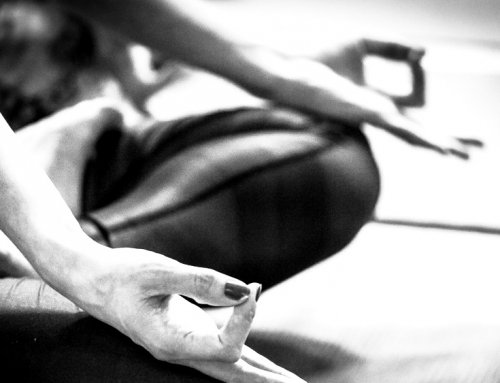By Scott Johnson
Mindfulness is a millennia-old practice that enhances your ability to become more awake in your life. Originally one part of the 7 Buddhist factors of awakening (the others being inquiry, energy, joy, ease, concentration and equanimity), it has more recently (in the last 50 years) been enhanced as a tool to deal with pain, stress and depression. Mindfulness is a “process of personal discovery” that assists in allowing you to see through the perceived negative patterns of awareness and be more open to the processes of life as they arise.
If we look at classical yoga philosophy, particularly the eight-limbed path presented by Patanjali in the Yoga Sutras, mindfulness can be seen as almost identical to the route toward Samadhi, the ability to be fully present with a completely open point of view. In fact, mindfulness and yoga are really 2 different sides of the same coin, the coin being one of waking up. Yoga, in these modern times, has more of the emphasis on asana (or yoga postures) and while it is a good thing to focus on our bodies and the nurturing of healthy posture and a healthy relationship to our bodies, it is important to remember that all this is happening as a response to our awareness of our bodies. So, if we are not careful, we can bring our own negative connotations and patterns to our yoga practice and miss out on the opportunity to discover why we are truly practicing yoga in the first place, seeing how we then nurture and continue to practice from that place.
Mindfulness also, just like yoga asana, brings focus and clarity to the relationship we have with the body and breath. Through mindful practices like the body scan and mindful movement we can begin to nurture a healthy relationship with our bodies without judgement. This can then greatly influence our own unique yoga practices and move it from something that feels good to something that can have true meaning in our lives.
Here are 5 ways that being truly mindful in your yoga practice can deepen your connection with it. If you have any more please do add them in the comments below.
1. Realising every practice is new
When you come to your yoga mat imagine that this practice was the first time you had experienced yoga. That everything was fresh. That when you stand or sit ready to begin, you let go of everything you have known before and experience the body and breath as if for the first time with no preconceptions and just allowing what arises to arise. You may already have a yoga practice or sequence that you know. Meet it with this awareness and clarity and see what flows and evolves.
2. Feeling the whole body move
Being fully present to movement itself rather than thinking of moving specific areas of the body allows us to be present with nothing being left out. When you reach your arms up, feel as if the whole of your body and awareness is lifting with them. Leave no part of you out in the way you move so that your whole body is involved in the process. Becoming more involved in the actual full movement itself allows us to stay present to sensation and feedback we are receiving from the body. This enhances sensitivity to our physical body allowing us to make proactive choices in how we relate to asana through a deeper felt sense.
3. Allowing the breath to lead you
Be fully present to the breath and notice the inherent relationship between the body and breath. If you need to, slow down and allow there to be a real involvement with the breath and the body. When you do move, allow the movement to come from the breath itself so that the body responds with the awareness of breath. The breath is the element of our yoga practice that links the body to the subtler aspects of ourselves, mind and prana. This step alone can greatly enhance how our yoga practice unfolds.
4. Noticing your inner language
Once you are practicing the first 3 steps then allow yourself to become aware of the inner dialogue you are having with yourself. Often when practicing our minds can wander to other things in our lives, even comparing the posture to other experiences we have had in that same posture before. Allow yourself to acknowledge this and come back to where you are now in this moment, in this body and breath, bringing clarity and focus to how you can relate your self to this experience without judging it. Yoga & mindfulness are leading us toward experiencing life beyond language, beyond words. When we begin to practice like this we begin to trust ourselves.
5. Letting go of striving
How can we let go of striving in yoga postures? Isn’t that the point?
Well, yes we can allow ourselves to move toward opening into any yoga posture that we choose to be working on but often working the body toward a certain end can lead us to push and pull our bodies in a way that can be detrimental to it, let alone the way our minds relate to that pushing and pulling. If we let go of striving toward a pose, but meet ourselves on the pathway toward an end, we create a real balance in our awareness of ourselves and our bodies. We begin to nurture acceptance of ourselves and where we are and patience toward where we are going, knowing that all will happen when it is ready.





Leave A Comment